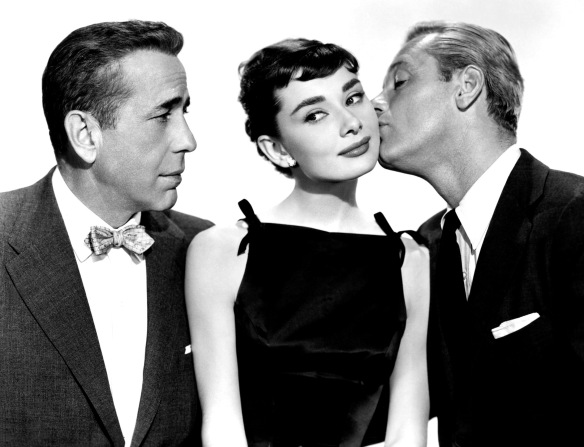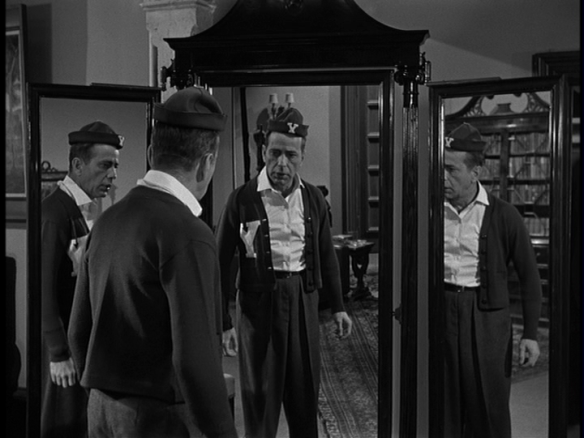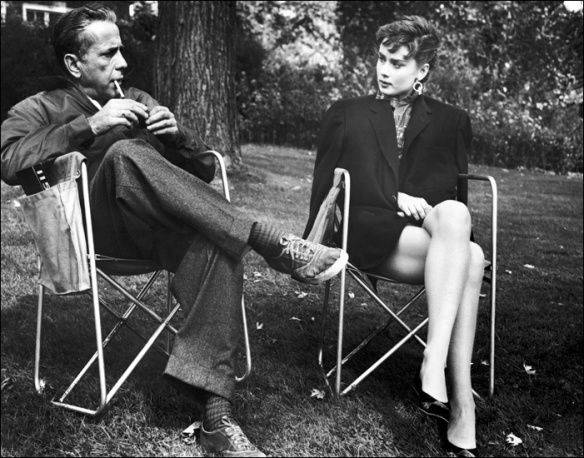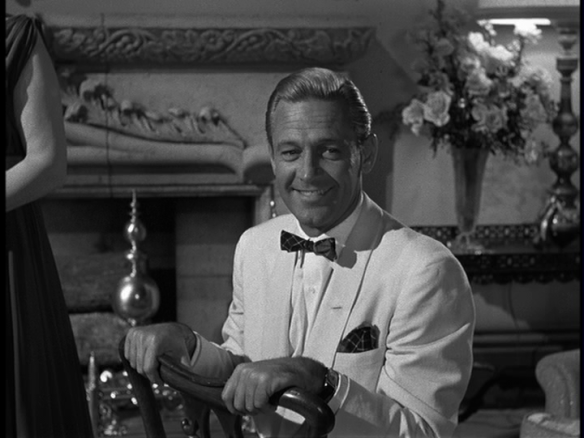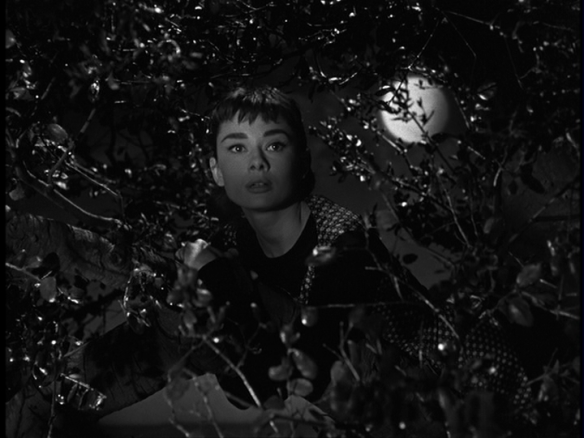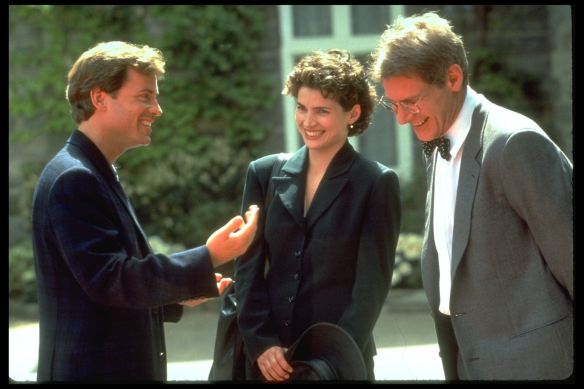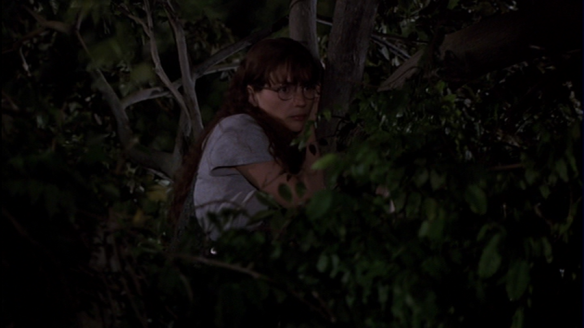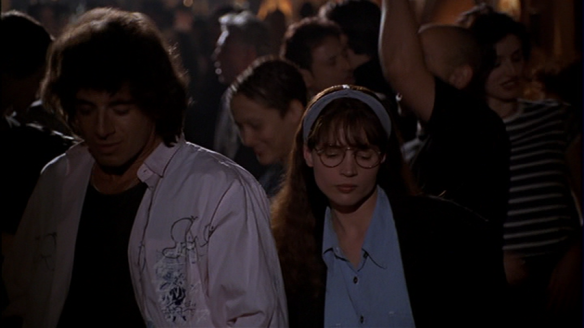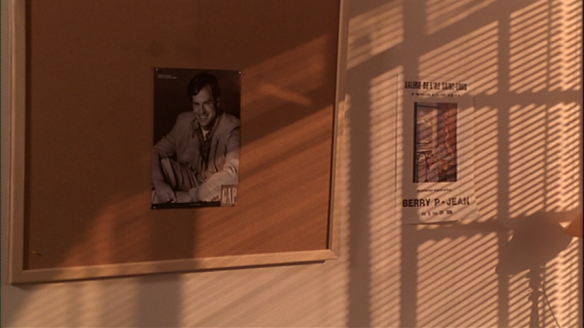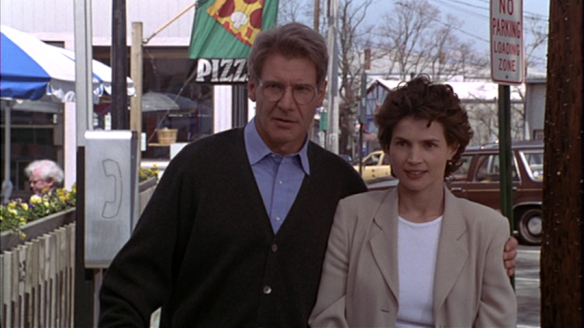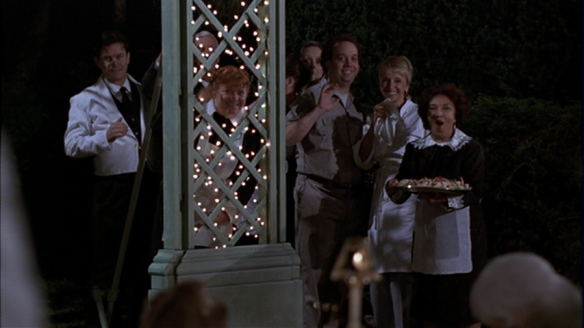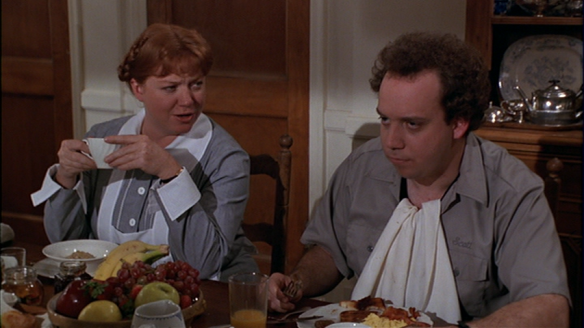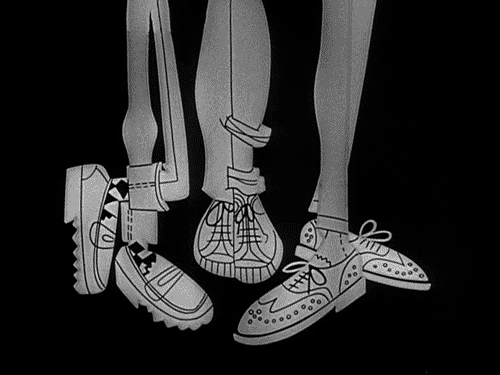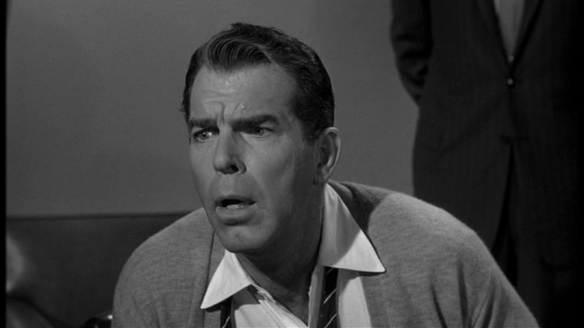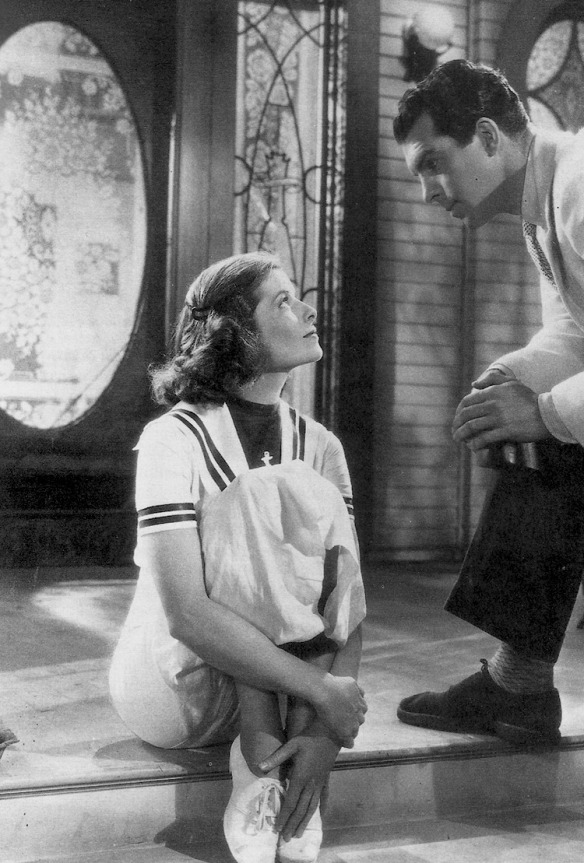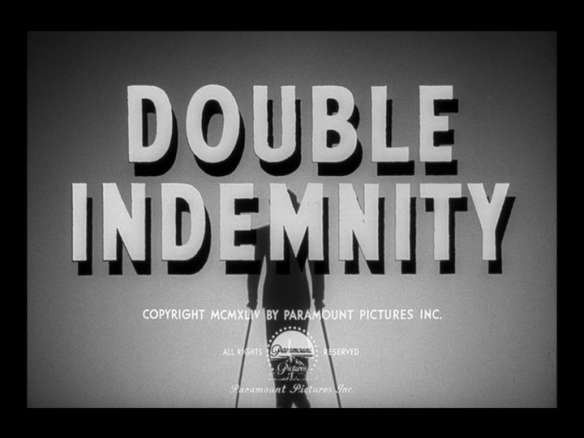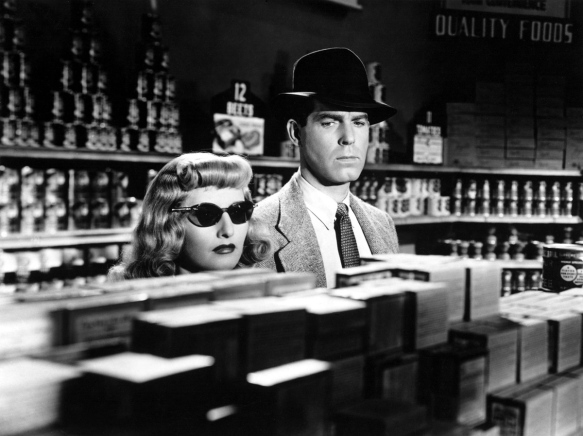Remakes get the shaft, man. They face the fiercest competition of all in the film world: the original. The sacred, untouchable original starring the legendary, flawless actors with the letter-perfect script and astute director. So don’t touch it, film world! But they do. And sometimes it works out okay. And sometimes it doesn’t. But there are always comparisons to the original. And while there is almost always criticism of any film, the criticism of a remake is frequently rooted in its failure to meet the standards set by that untouchable original. “The original is always better,” is often the resounding sentiment when it comes to remakes.
Sabrina tells the story of Sabrina Fairchild, the awkward daughter of a chauffeur of the wealthy Larrabee family. She’s hopelessly in love with the Larrabee’s younger son, David, a handsome, carefree playboy who barely acknowledges her existence. She goes to Paris to try to forget him, returns as a beautiful woman, and David subsequently falls in love with her. David, however, is supposed to soon be marrying the daughter of another business tycoon, and older brother Linus, the shrewd businessman, hopes the marriage will secure a merger between the two companies. To keep the marriage and merger intact, Linus intervenes and romances Sabrina–and ends up falling in love with her himself (even though he doesn’t realize it). And poor Sabrina doesn’t know which Larrabee she’s in love with anymore. It is nothing short of a modern fairy tale.
Sabrina, derived from the stage play Sabrina Fair, was twice made into a major film, in 1954 by Billy Wilder and again in 1995 by Sydney Pollack. But which take was better?
Humphrey Bogart. Audrey Hepburn. William Holden. (Even the extras in this film turned out to be Hollywood legends, you know.) This film should ooze screen presence. Does it?
As lauded as this film was, Bogart was often cited as being “too old” for the part. (Cary Grant was Wilder’s first choice to play the part. Grant rejected the part, as he was temporarily retired at the time.) I don’t agree with that criticism; Bogart’s performance is probably my favorite in the film.
“Look at me–Joe College with a touch of arthritis.” Love this guy.
Bogart does a great job of portraying Linus’s businesslike approach to “dealing with” Sabrina. When he is first sent to handle the situation, you know he is doing it for business reasons, but then he kisses Sabrina so forcefully as only Bogart can that you begin to wonder. But then he complains the next day to his father about having to set aside work to take Sabrina on a date for the day, and you’re again unsure of his intentions. And so Bogart keeps you questioning Linus’s motives throughout the whole movie: Is this just business? Or has he already fallen in love with her? And you can’t be 100% sure until the film’s final minute.
Bogart, though, reportedly had nothing but disdain for his costars. He nicknamed William Holden “Smiling Jim” and when asked how he liked working with Audrey Hepburn, he replied, “It’s OK, if you don’t mind to make 20 takes.” Ouch!
This disdain doesn’t translate to the screen, however. Admittedly, there is little chemistry between Hepburn and Bogart–but just enough, just enough to make the relationship believable, just enough to keep you hoping that Sabrina will choose Linus over David.
Oh, David. How could anyone choose David?
Okay, if Bogart was considered “too old,” then what exactly was Holden? His age (Holden was 36 when the film was released–and he looks it) is more noticeable, distracting even, than Bogart’s. Linus is supposed to be older, wiser, more responsible. David is supposed to be young, dashing, carefree. Holden doesn’t exactly embody the debonair, handsome playboy as well as another actor might have, making it somewhat difficult to understand Sabrina’s obsession with him, but he does a fair job. (Maybe I’m just not a fan of Holden. I’ve never been blown away by his performances.)
The central role of the film, though, is of course Sabrina.
When we first meet Sabrina, she’s hidden in a tree, spying wistfully on the Larrabee family hosting one of their spectacular parties. She is awkward and so obsessed with David that she even attempts suicide. She’s also supposed to be an “ugly duckling,” but I doubt all the makeup and wardrobe experts in the world could ever successfully transform Audrey Hepburn into an ugly duckling.
Through her trip to Paris (in this version, she attends a cooking school–hello, 1950s!), Sabrina matures and gains confidence. The audience is shown little of her time in Paris–we see her disastrous first cooking experience and the beginnings of a friendship with a sweet old man, but that’s it. Instead of being shown how she grows and changes, we are simply told via Sabrina’s letters home to her father. So when she returns home as a sophisticated woman, it’s difficult to swallow. It is a classic example of telling and not showing.
In this version, Sabrina comes very close to crossing the line from naive to flat-out annoying. Her obsession with David is not only sickening but bemusing. What is so great about David? He has…Actually, I can’t think of any redeeming quality that David may possess. He certainly is not worth locking yourself in the garage and turning on all twelve cars the Larrabee family owns. Get a grip, girl. Perhaps Bogart had a point when he criticized Hepburn’s acting–she certainly isn’t as endearing as I used to think she was.
Overall, though, this is a good film. The actors play their parts well, some more effectively than others, and even if aspects of it are painfully dated, it is still a sweet story and a very enjoyable film.
Take #2: Sydney Pollack, 1995
Sydney Pollack’s update of Billy Wilder’s classic is superbly acted, well-written, and enchanting. Even though it may seem impossible for another generation of actors to compete with the legendary stars of the original who inhabited their roles so iconically, this group of actors does it very well–in fact, I would even argue they do it better.
Let’s start with Sabrina. Julia Ormond arguably had the most difficult job of trying to recreate a role so indelibly linked with an actress as beloved as Audrey Hepburn. But she does it so well. Part of the power of Sabrina in Pollack’s version is she is given more depth, more strength.
She is just as awkward and googly-eyed about David as Hepburn’s Sabrina. But Ormond conveys this lack of grace and social skills so much more effectively. You really feel embarrassed for Sabrina as she confesses her love to David before leaving for Paris–and it turns out Linus is the one in David’s closet instead. (This is such a better way of allowing the audience see Linus and Sabrina interact for the first time than Linus’s discovery of Sabrina’s suicide attempt in the garage in the original.) You feel so, so, so, so bad for her as she struggles in Paris as a somewhat incompetent, inexperienced photographer’s assistant. Man, do you feel bad for her.
But then the photographer takes an interest in her, and you see her begin to change. She becomes more comfortable with herself, more confident, and she even discovers a passion: photography. She really does “find herself”–and the audience gets to see it, not just hear about it in a letter home.
Yeah, Sabrina and this photographer go dancing in some club. It’s sooooooooo ’90s. Unwanted ’90s flashbacks aside, the transformation of Sabrina is so much more expansive and believable–and as a result, the character of Sabrina is more fully formed.
Now, in the original, I had a little trouble believing Sabrina could be so obsessed with David. There must be a deleted scene with Holden holding a voodoo doll or something. (Maybe I’ve watched Dark Shadows for too long.) But in this version, David Larrabee did a Gap Ad. Oh yeah. Take that, Holden.
(And of course Sabrina had it on her wall in Paris.)
Greg Kinnear, only in his second feature film, embodies the character of David so much better than Holden. He actually is charming and handsome, sweeping girls off their feet, whereas Holden’s David just acted like he was all those things. Kinnear is the real deal, man.
The chemistry between Ormond and Kinnear is also superior to that of Hepburn and Holden–and the chemistry between Ormond and Harrison Ford is if not superior then definitely more palpable than that between Bogart and Hepburn.
Have these people ever had their picture taken before?
Harrison Ford gives a great performance as the cold-hearted businessman, Linus Larrabee. The character of Linus is given more room to breathe in this version, as the father character is eliminated. The head of the Larrabee family was always breathing down Bogart’s neck and sticking his nose up at anyone who didn’t have a trust fund in Wilder’s version. Pollack instead has Linus as the successor to his father as the head of the family and the family business. With his father’s absence, you are given a better understanding of why Linus is the way he is–why he is so consumed by the family business and money and why he is so fixed in his day-to-day routine.
As well as Bogart did at showing the two sides of Linus’s personality–the cunning businessman and the softer, vulnerable side–Ford may just give a stronger performance. You see how far Linus is willing to go to seal a business deal, yet at the same time you have to convince yourself that he’s not in love with Sabrina and is romancing her only for the sake of a business deal.
Not only are the principal characters given more development and depth in Pollack’s film, the minor characters are stronger, too. David’s fiance is given a personality, a career, and you are able to see what initially drew him to her (and what ultimately draws him back). The dialogue is also stronger, wittier. “We were up to our elbows in your underwear drawer. It was like touching the Shroud of Turin.”
What really convinced me that Pollack’s version was superior to Wilder’s wasn’t so much the strength of the story or the development of the characters, however. It was actually the fact that THIS ONE GUY is in it:
What’s up, Paul Giamatti?
He basically does two things in this movie: eats and smokes. But it’s still awesome. And in this case, it seals the deal that the remake is indeed superior to the original.

